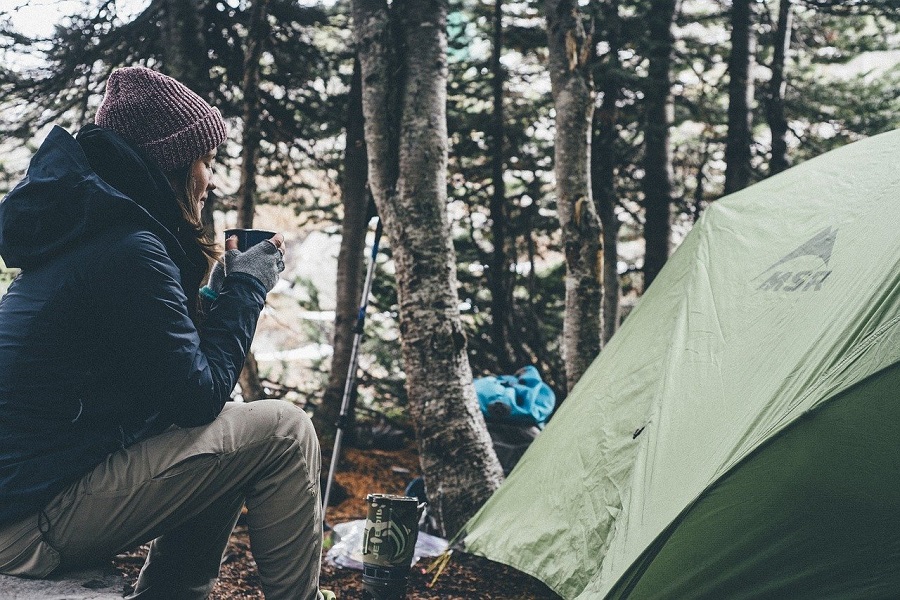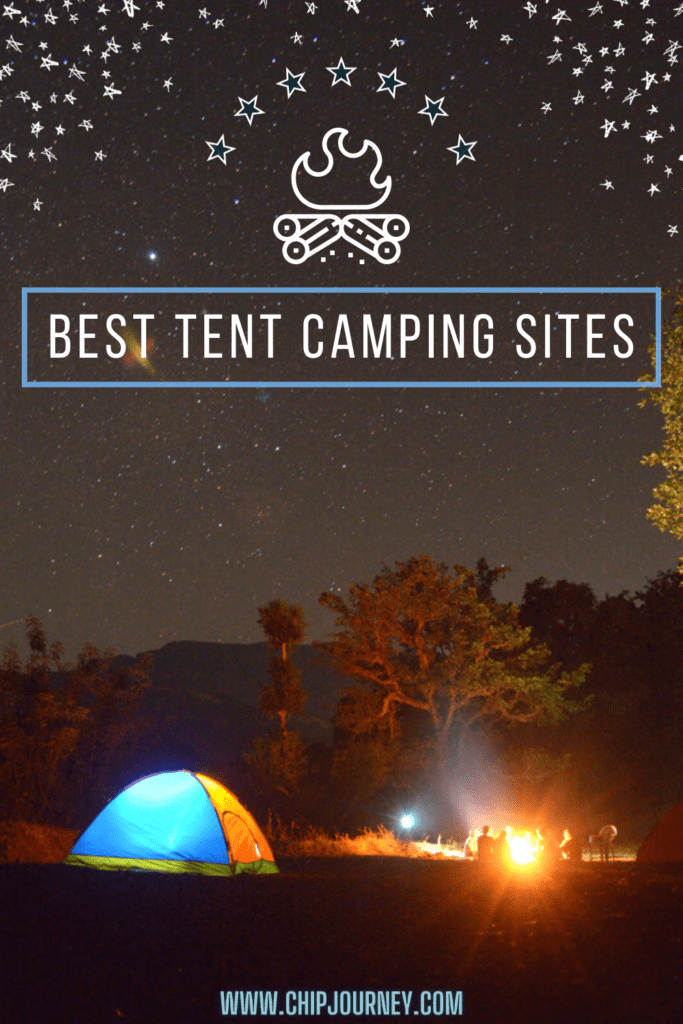
If you’re one who loves the outdoors, there’s nothing to beat the feeling of being lulled to sleep by the cool wind as you lie back and gaze at the star-lit sky.
That’s the beauty of camping! It’s mesmerizing, relaxing, and your chance to connect with yourself. But there’s always a ‘conditions apply. Making your adventure trip a truly enriching experience starts with deciding the best tent camping sites. You need a great spot to pitch your tent if you are to stay comfortable, warm, and dry.
With this in mind, we bring to you tried and tested tips on picking the best tent camping sites for your next trip. Do check them out. Also, read up on the different types of camping and their benefits.
Why We Love Tent Camping
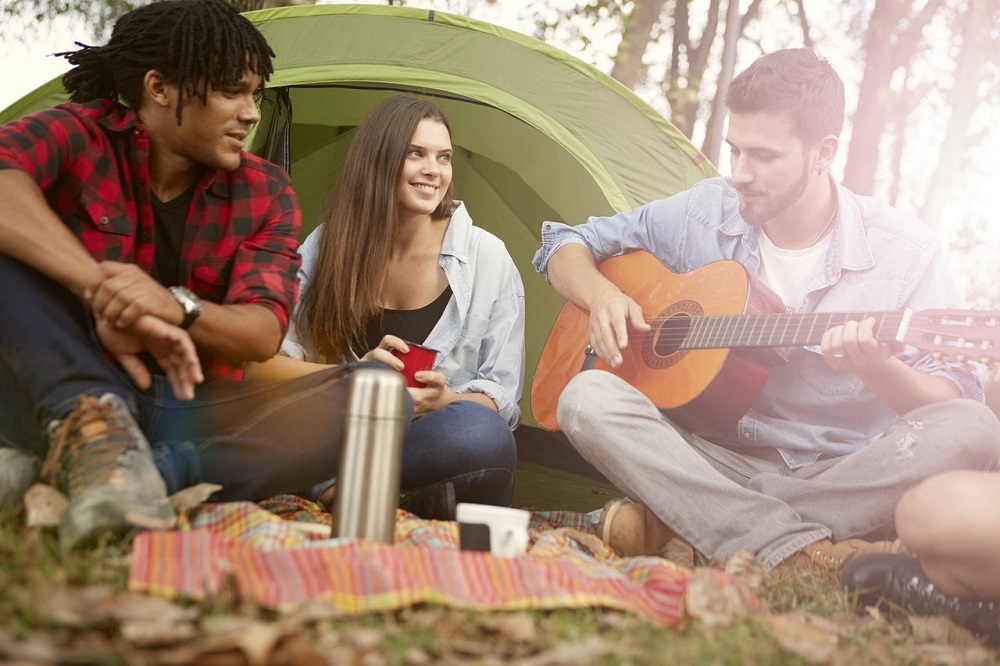
There is a diverse range of activities people indulge in to take a break from the mundane and seemingly fixed pattern of life. But we choose tent camping for the following reasons:
- Surrounded by nature, it’s the perfect way to refresh and rejuvenate oneself. Campers have reported a noticeable improvement in the mood on returning from a trip.
2. It is a no-frills trip. Simply pack and go. Camping requires only a few essentials like food, water, and maybe a tent.
3. There’s something for every type of camper. Whether you’d love to scale a rocky mountain or sit back and watch life in its myriad forms on a beautiful meadow, the options are endless.
4. Camping costs very little or nothing at all.
5. You don’t need to be an experienced camper to take this adventure trip.
6. The necessary camping equipment is readily available.
It’s ideal for individuals, couples, families, and friends.
Types of Camping and Campsites
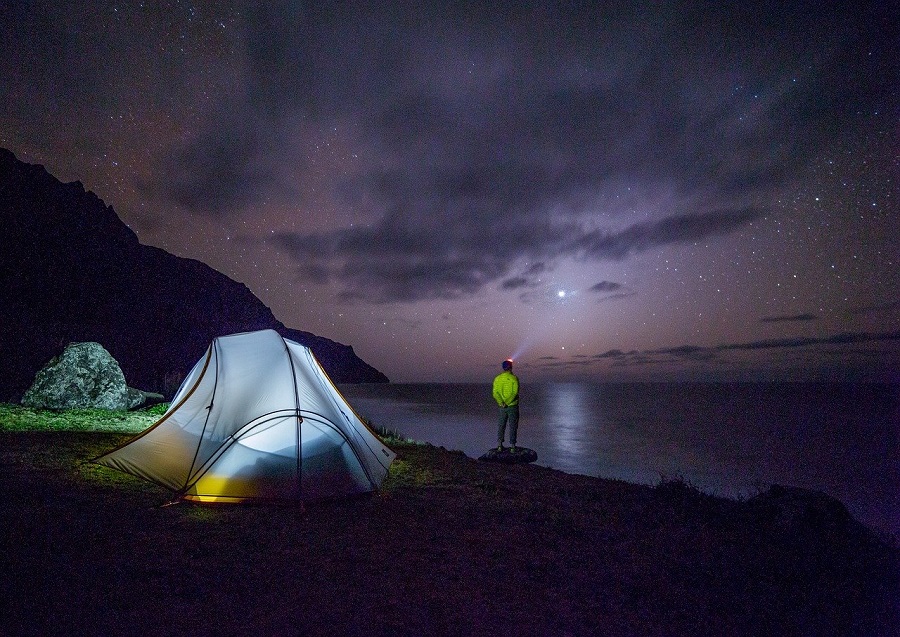
Knowing the different types of campsites out there will help you pick the best one for you. You can choose to camp in the wild or at a campsite. What’s the difference?
Campsites are designated camping areas owned and managed by clubs. They make available a range of amenities, easing the camping experience without dulling its charm. It is ideal for beginner campers. They offer pre-assembled tents that can be rented by campers. While it’s great to book such campsites, they can get crowded and also cost more.
Wild camping is camping in the true sense of the term. It involves setting up unofficial campgrounds such as in forested areas and national parks. It requires roughing it out, but the experience is unparalleled. You have access to some of the most beautiful locations and you can escape the crowds. However, as a camper choosing the wild, you need to be aware of and abide by the laws of the place.
Camping is of different kinds too. The most common is tent camping. As the name suggests, it includes living outdoors in a tent. Backpacking is another type. In this kind, a camper is constantly on the move. He moves around the entire day exploring an area, setting up a tent or hammock for rest at night, only to pack and move again the next day.
Survival camping, undertaken mostly by seasoned campers, is a strict form of camping. It involves total dependence on nature for all necessities, from food to shelter to protection. There is canoe camping for adventure enthusiasts. And finally, there RV camping. It is a more modern form of camping as RVs are self-contained vehicles.
Choosing a Tent Camping Site
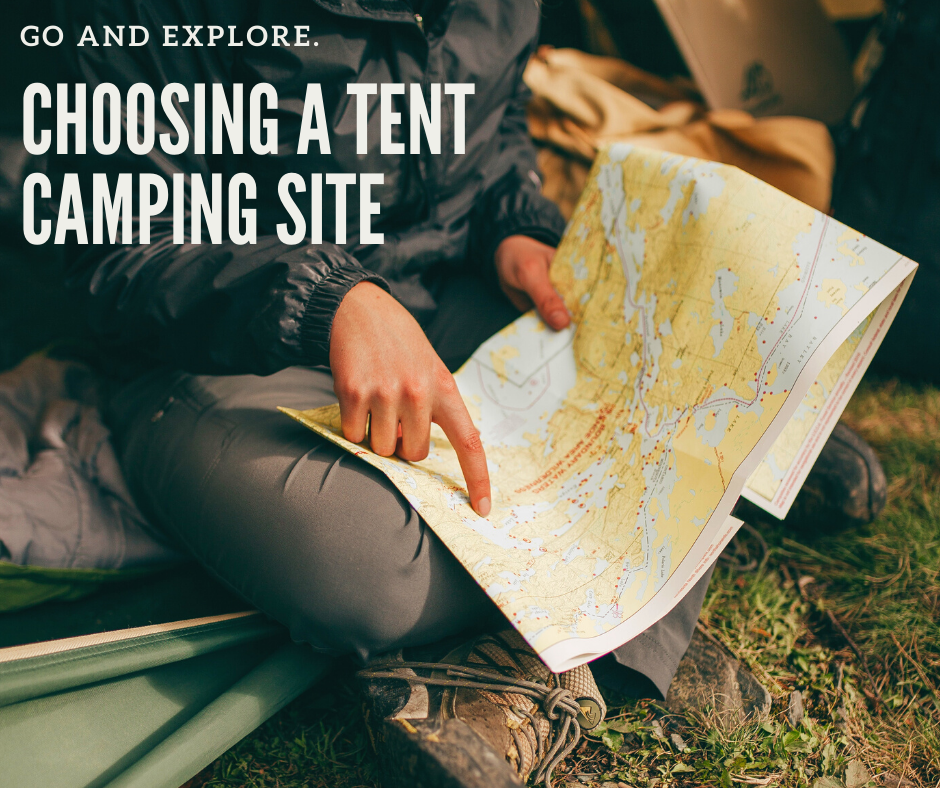
Are there any campsites around?
That’s the first thing you need to lookup.
- Shortlist a few areas you would like to explore.
- Refer to a guide book or an online source, to get information on the type and number of tenting campsites in and around the area.
- GPS services, notably Google Maps, come handy when searching for campsites along a trail or route.
- You can also lookup the local camping databases or download apps dedicated to camping.
Perusing the available campsites will bring you to speed on the rules for each campsite. It is important since some spots require campers to apply for a permit to visit.
Book in Advance
No doubt, camping is more exciting when it’s unplanned. But it may not be the best decision if the trial is a heavily-visited one.
Selected sites ask tenters to pre-book. The reason is they close further bookings if they have a larger crowd visiting. Don’t want to be disappointed, right?
Leveled And Flat
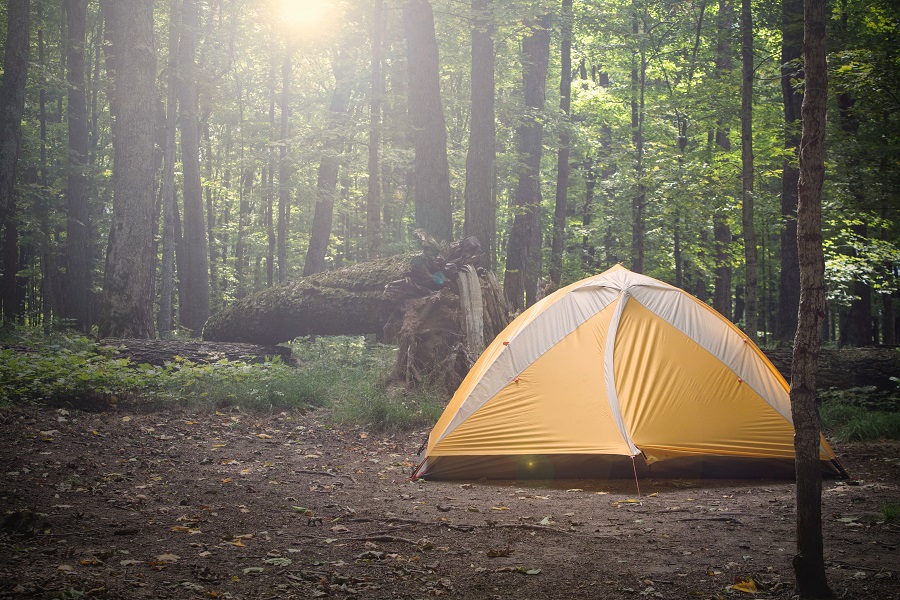
A relatively ‘flat’ ground is what we recommend for a tent camping site. Previously impacted areas are usually more leveled than others.
While it may seem minor to start with, sleeping at an angle gets uncomfortable. You may roll down a slope in your sleep or your sleeping bag may keep slipping from beneath. It is also easier to install a tent on level ground than on one that has a slight incline. We suggest flat ground covered in grass or sand or a rock slab for soundless sleep.
If leveled surfaces are hard to come by, peg the tent in such a way that your head is positioned higher than your feet. It maintains proper blood circulation and ensures you don’t feel dizzy when you wake up.
Clear out uneven areas before you install your tent. You don’t want rocks digging into your back while you sleep. Pitching your tent on a level surface will also ensure no water collects should there be a downpour. Land covered with forest buffs such as leaves, moss, and pine needles makes sleeping comfortable.
Size…
Are you an alone backpacker? Or, do you plan to go camping as a family or a large group?
The area you choose should be wide enough to accommodate a single big tent or several smaller tents.
Tent Camping Sites – Well-connected
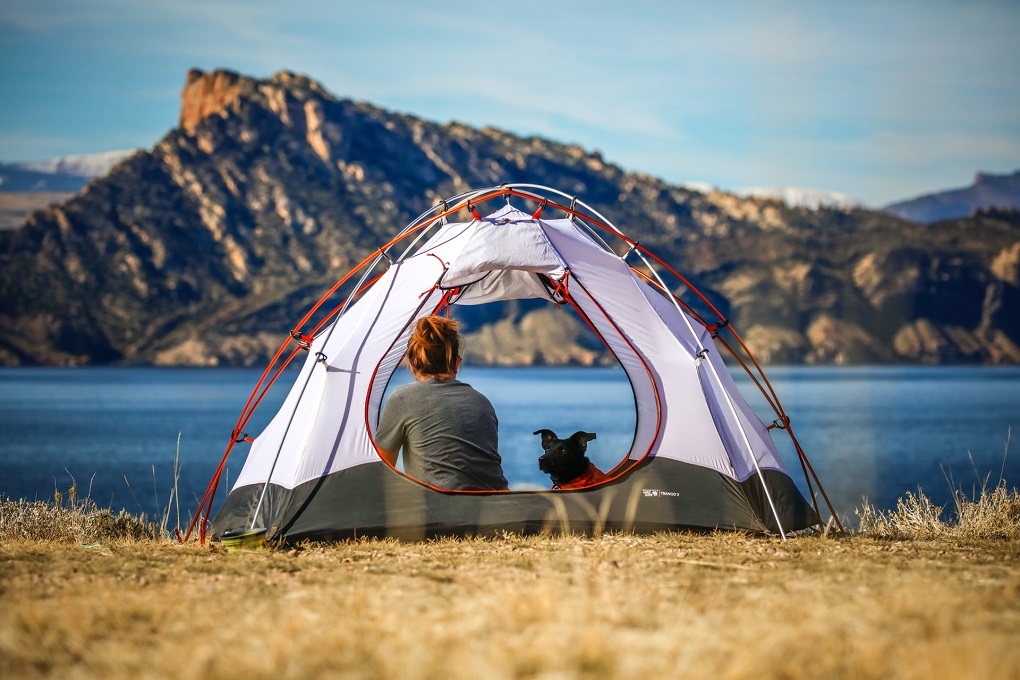
Sounds like quite the paradox given that every camping trip is an attempt to disconnect from our busy lives!
There are a few basic things we all need to survive in the wild. The first is water. You need it to cook, clean, and wash. Hence, an important consideration when choosing the tent camping site is its proximity to the water source. It should preferably be a stream or a river. Stagnant water is generally polluted or sometimes, smells and tastes stale.
As a rule of thumb: it should be neither too close nor too far. 200 meters is an ideal distance from a lake, stream, or river irrigating the campsites along the trail. Too close to the water edge and you will spend your nights worrying about the chances of a flood. You might also be visited by animals coming to quench their thirst.
Campsites that are in very close proximity to a water source see a lot of insects too, especially mosquitoes. Still water lakes and marshlands are the perfect breeding grounds for these pests.
Talking of distances, it should also be in proximity to the trail, around 200 feet.
Steer Clear of Danger Zones
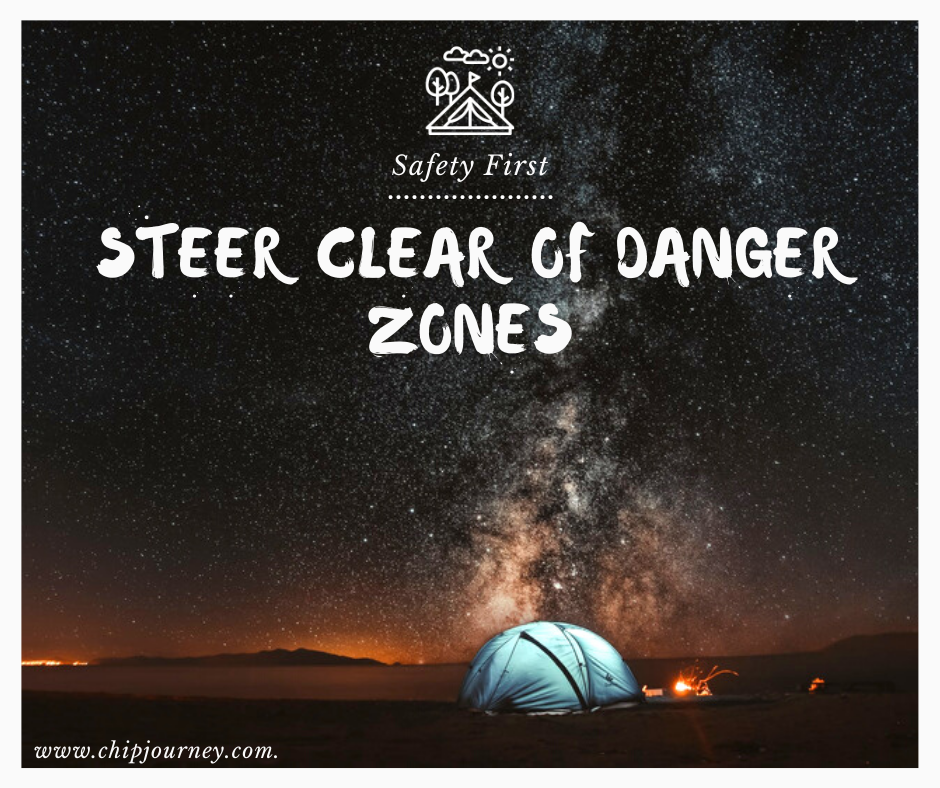
Your camping trip should be fun and exciting, not one full of disasters. There are a few zones that are better avoided due to their high-risk nature.
- If setting up a house under a canopy of trees, survey the area for decaying and low-hanging branches. They could crash your tent while you are asleep.
- Avoid low-lying areas and those along a river or stream that are prone to flash floods.
- If settling at the base of a hill or mountain, ensure that your tent is not in the path of an avalanche or a rockslide.
- Avoid ridge tops and reentrants.
- Try not to go deep into a forest, especially areas that have a dense forest cover. Heavy storms can cause trees to collapse.
Think Weather When Camping
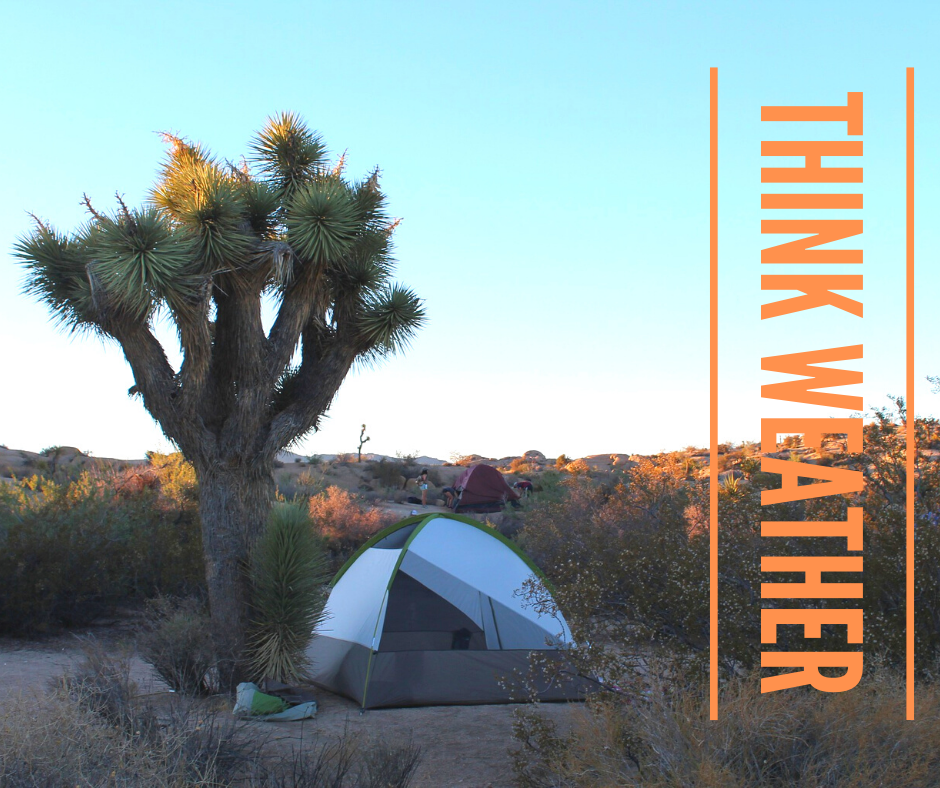
When out in the wild, bad weather is something you should be prepared for, and choosing a campsite is contingent upon this.
Camping in the summers can get uncomfortable if you are exposed to direct sunlight. Look for shaded spots. They provide the much-needed respite on a hot, balmy afternoon. Prolonged exposure to direct and strong sunlight also causes your tent shade to wear out faster. Pitching your tent under a thick canopy of trees translates to more warmth and less dew.
Orient the tent to receive the right amount of sunshine, after all, you need a little light and warmth. On a safari campsite located in a desert, shade throughout the day is a must. If you like to sleep in late, house your tent in a shadier spot, where the sun won’t trouble you with its heat and light.
In the winters, camp on higher ground. Doing so has several advantages. It drains well. So, no waking up in a puddle of water in case it decides to rain. It is also warmer on the top. This rule could apply to warmer months too. Lower spots like valleys and narrow canyons, get chilly as the cool winds settle there. Yet another risk of camping in a low spot is that a fast-growing flash flood can wash your tent away. Chilly and wet conditions are not only uncomfortable but could also be unsafe if the weather takes a turn for the worse.
Think about wind speed and direction as well. The rapping sound of the tent door playing against the silence of the night is disturbing and annoying. A detailed area map can help you get information about the wind speed and direction in an area.
In high-wind areas, check if there are large boulders or trees around. You will most likely have to build your tent behind these structures. They break the force of the wind and keep your tent from flying away with a strong gust. Choose the windier locations for protection from bugs and pests.
Keep an Eye Out for Wild Animals
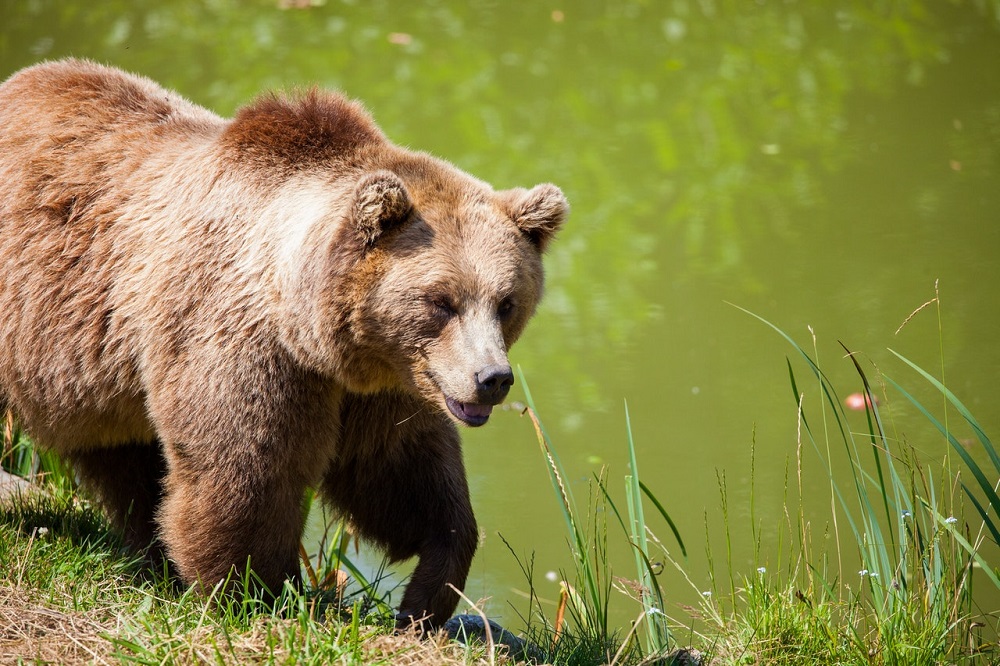
Campers often look to camp along game trails as their clear paths make it easy to get around the place. The lack of undergrowth has a reason. It sees heavy traffic from animals – deers, bears, and the likes.
Honestly, they are not the best campgrounds because while a huge grizzly bear or an agile deer might be picture-perfect, it’s not quite the same when they start approaching you.
Set Out Early

Start early, so that you have enough time to look for a good tent camping site. As the darkness starts setting in, it can get challenging to find your way.
Also, if you are unable to zero in on a suitable campsite before the sun goes down, you’ll have to set up camp where you are, whether it is the steep slope of a mountain or high up on a hill.
Move Off-Trail – Camping Privacy
You may not necessarily be the only one camping out on a particular day. Check around to see that your tent does not block another camper’s view. Also, don’t be the intruder in another backpacker’s privacy.
Ask yourself – are you disturbing others?
Looking to escape the crowds? Travel mid-week if your schedule permits. Campsites see a lot of crowds on weekends.
Pet-Friendly Camping Tips

Want to take your furry buddy along on this family trip? Worried about leaving your four-legged friend behind?
Regrettably, not all tent camping sites allow pets. Those that do, make provisions such as dog parks for your canine. With other pets around and fenced-in areas where you can let your dog loose, your pet is sure to have a great time too.
Bringing your pet along not only lets us feel assured, but they make great companions too. Call up in advance to check the pet policy.
Comforts Camping Sites
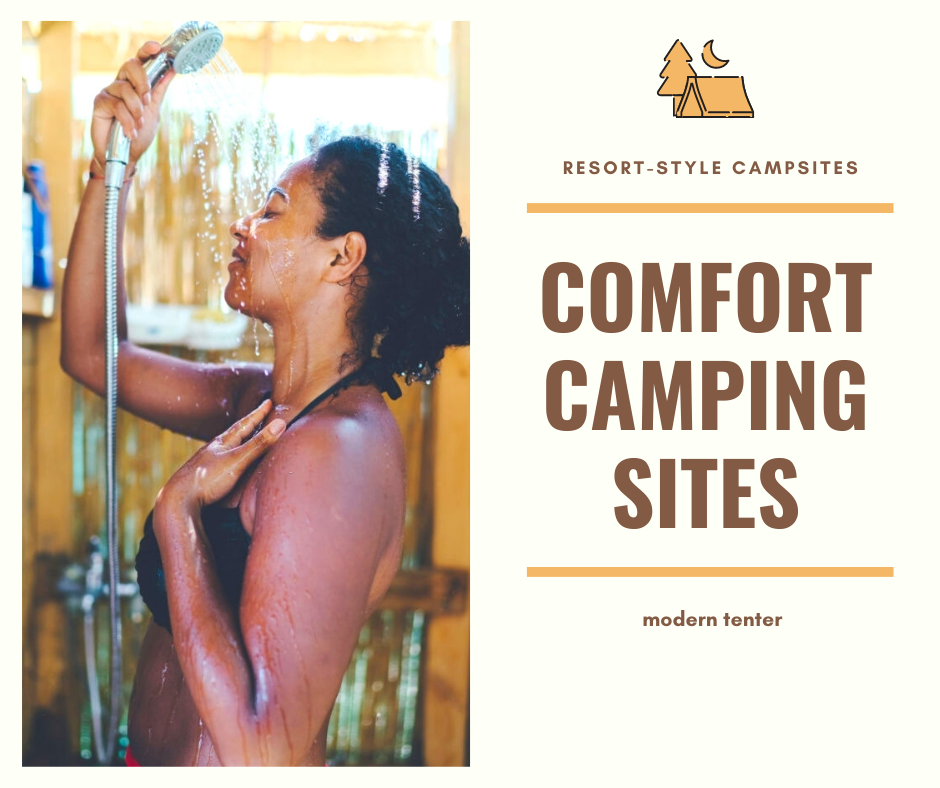
Camping is all about going back to basics. However, a few tent camping sites stretch it when it comes to comfort. They feature well-maintained shower booths, restrooms, and hot baths. A hot shower after a day of trekking, sounds tempting, right?
These resort-style campsites ensure you enjoy a comfortable stay away from home; they are designed to cater to the modern tenter. There are designated spacious areas for tent installations too. Here you will find electrical hookups to recharge your camping gadgets. Some even offer a complimentary wifi connection. Established campsites offer basic furniture like tent tables and fire pits.
Don’t forget the scenic views
For all of you looking to capture those Instagram-worthy pictures, don’t forget to search for a campsite that offers breathtaking views.
Other Tent Camping Tips
Ensuring the best camping adventure does stop at choosing the ideal campsite. There’s more you need to do before you get there:
1. Do you know how to set up a tent? Silly of us to ask. But believe it or not, we’ve seen even seasoned campers, fumble with the nuts, bolts, and poles. Practice setting up your tent at home before you head out. (VIDEO)
2. Pack a few topographical maps. They help get a fair idea of the location and directions to reach the planned campsite.
3. For campsites that you haven’t visited before, collect enough information about the amenities and activities on offer. Ask to see a few photographs. Reserve a campsite before you set out.
4. Cooking in the wild can be less tedious and highly enjoyable if only you plan ahead of time. There are a significant number of camping-friendly recipes. They can be frozen and carried to the campsite, where they can later be warmed just before a meal.
5. Uneven camping grounds can make it difficult to get a good night’s sleep. Carry some extra padding to get comfortable. You may pack an inflatable mattress too.
6. Board and card games afford hours of fun while out in the wild. For times when you are not hiking, swimming or fishing, spend your time playing games.
7. The weather is unpredictable and so you have to be covered for the sun and rain. Waterproof your tent with a good-quality silicone sealant. You can also get a tarp rainfly for your tent.
8. It is not unusual to have animals drawn to your food supplies. Get along bags that you can use to hang your food from a height to keep it safe and out of bounds.
9. Pack in a bug spray or some mosquito repellent.
Camping Etiquette
Make sure you preserve your natural environment as you found it. Try not to go camping beyond established sites as camping activities impact the natural surroundings.
1. Refrain from polluting the water source. Do not dump your wastes there.
2. You may make a few adjustments such as leveling the ground. But ensure you don’t impact the site too much, especially if it is not an established site.
3. Put out any fires you may have started. Scatter the ashes before you leave.
4. Do not uproot plants or tear down branches to clear a patch of land for your tent.
5. Be mindful of the footwear you wear. Heavy hiking boots compact the soil, stunting plant growth.
6. Collect your trash and take it with you when you leave. Leaving trash not only pollutes the natural environment but could also be harmful to animals if consumed.
A good tenting campsite is a guarantee for a good night’s sleep. Keep these pointers on choosing the best tent camping site in mind, and have fun while you explore the outdoors.
Written By Boyan Minchev
